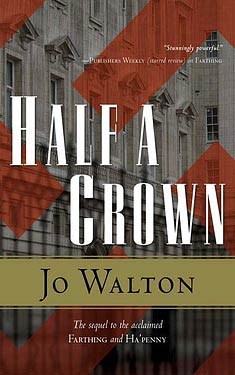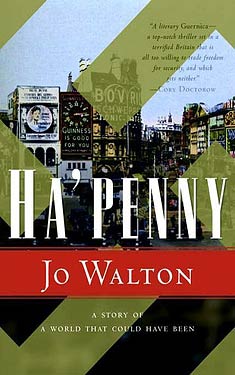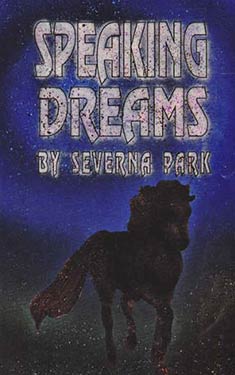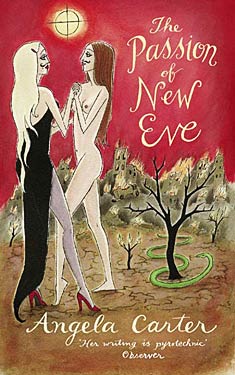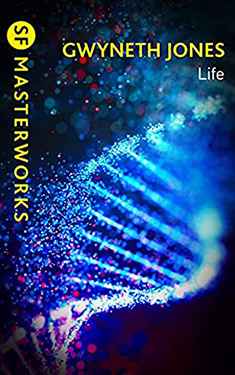Jo Walton
Completed 6/29/2020,
Reviewed 6/30/2020
4 stars
This is the third
book in the Small Change trilogy, which began with Farthing and was followed by
Ha’penny. It’s another book that by the
middle, I could not put it down. This
one began a little slowly, but picked up quickly. It takes place ten years after the last
book. It still features Investigator
Peter Carmichael who is now head of the British equivalent of the Gestapo and
his ward, Elvira, the daughter of another policeman who was killed in the first
book. This being the end of the trilogy,
everything that had been percolating in the previous books finally comes to a
dramatic head. The book didn’t win any
awards but was nominated for several, including two in other countries.
Though
Carmichael is head of the Watch, he is part of a secret network inside and
outside the Watch to get Jews out of the country. There is a peace conference scheduled to take
place in London between the fascist prime minister Normanby, Hitler, and the
royal prince of Japan, the representatives of the three superpowers. All eyes are on London and it is Carmichael’s
job to keep the city under control. At
the same time, Elvira and her best friend Betsy are about to make their coming
out as debutantes. About a week before
the conference, the two of them go to a rally with Lord Alan, a friend of Betsy’s
family. A riot ensues. Betsy breaks her arm and Elvira is arrested. Elvira is treated terribly, being pumped for
information she doesn’t have. Carmichael
gets her out, but it is only the beginning of a Kafkaesque nightmare for both
of them that culminates in a dramatic opening of the peace conference.
The book has
the same form as the previous two. It is
told by two narrators, Elvira in first person, and third person from Carmichael’s
perspective. It is Elvira’s narrative that
begins at a slow pace. Although very
smart (she’s been accepted at Oxford), she’s still rather a bubble-headed
debutante. But her story becomes very
interesting. Her mother abandoned her at
the age of six and her father was killed when she was eight. Carmichael raises her to be a proper lady
even though her mentor, Betsy’s mother, considers her guttertrash. Still, she transcends the slights and focuses
on position and future. She has little mind
for politics and though disturbing, her upper-class mentality makes her arrest
and detention almost comical. But as the
story continues, she becomes more aware of the state of the country and begins
her own unlikely fight against fascism.
Carmichael
is again a great character. His
relationship with is partner Jack is more detailed in this book than in the
others. Even though Elvira lived with
them, he and Jack kept their relationship a secret from her, as they did from
the rest of the world. Still, the prime
minister and the head of Scotland Yard know about him and Jack and use that to
manipulate him, as they have since the end of the first book. Somehow, Carmichael stays sane balancing
being a substitute father, a husband, the head of the Watch, and the head of
the secret movement to get persecuted Jews out of the country.
I give this
book four stars out of five. The writing
is prosy, but tight and the dialogue realistic. The unveiling of events is riveting. On my second day of reading, I could barely put
the book down. I stayed up too late to
finish it, and way to late to write this review. I have to say as a whole, the trilogy is
tremendous. It’s well thought out and has
a dramatic conclusion. I love Jo Walton’s
writing and am looking forward to her most recent trilogy, the first of which I’ve
already picked up on sale.
